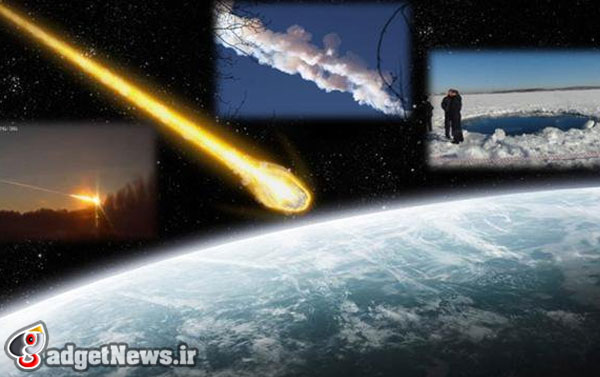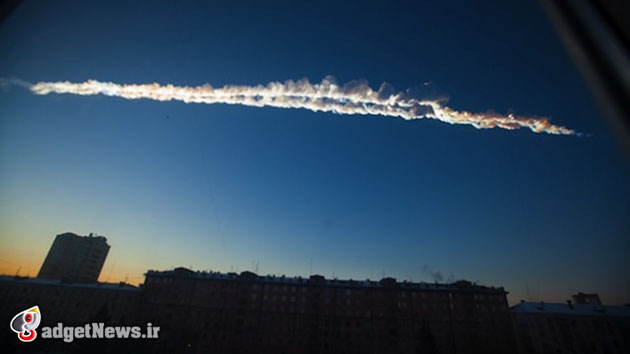
اختر شناسان هشدار دادند شهاب سنگی که امسال در شهر چلیابینسک در روسیه سقوط کرد احتمالاً اخطاری از جانب فضا بوده. مطالعات دانشمندان نشان می دهد این سنگ فضایی شاید علامتی باشد از احتمال خطری بزرگتر که زمین را تهدید می کند. به گفته آنان ممکن است تا ۲۰ شهاب آسمانی دیگر به سمت کره زمین در حرکت باشد.
در شش ماهه پس از اصابت شهاب سنگ به چلیابینسک، منجمان مشغول بررسی جنبه های مختلف آن بوده اند. این شهاب سنگ حدود ۱۰،۰۰۰ تن وزن داشته و با سرعتی بیش از ۱۷ کیلومتر بر ثانیه در حرکت بوده. همچنین مشخص شده نیروی حاصل از انفجار آن برابر ۴۶۰ هزار تن تی اِن تی بوده که به ساکنانِ محلِ برخورد، خسارات جانی و مالی وارد کرده.

چند محقق با استفاده از برنامه های رایانه ای، اقدام به یافتن مسیر مدار این شهاب سنگ به دور خورشید کرده اند. البته در عین حال به طور قطع نمی توان مسیر شهاب سنگ ها را مشخص کرد چراکه کشش های گرانشی و دیگر عوامل که بعضاً ناشناخته هم موجب تغییر مسیر آنها می شود؛ پس احتمال دارد اصلاً خطری در کار نباشد.
اما محاسبات انجام شده، وجود پیوندی پویا بین برخی موارد مد نظر ستاره شناسان را نشان می دهند. البته این نشانه ها به قدر کافی قابل اعتماد نیستند که بتوان ارتباطی قطعی بین شواهد موجود برقرار کرد و محققان کماکان در حال مطالعه و یافتن روابط احتمالی میان مشاهدات خود هستند.
به نظر شما چنین هشدارهایی تا چه حد می توانند جدی باشند؟ آیا این حادثه نادر بوده یا فکر می کنید در پی آن حوادث دیگری هم زمین را تهدید می کند؟
منبع : technobuffalo
Researchers Believe Russian Meteorite Part of Larger Threat
That Chelyabinsk meteorite from earlier this year might have been a warning shot from space, astronomers this week warned. Scientists studying the dramatic event from earlier this year believe the space rock could signal a larger group—possibly up to 20 related asteroids—headed straight toward Earth. The more you know.
In the six months since the meteor tore through the Chelyabinsk sky, astronomers have learned—and continue to learn—quite a bit about the event. We already know the rock weighs around 10,000 tons, and traveled about 11 miles per second. We also know that it managed to create a shockwave that circled the Earth two times; the superbolide itself exploded with the force of 460 kilotons of TNT, injuring people, damaging buildings, etc. And that could be the start.
According to io9, Spanish researchers Carlos and Raul de la Fuente Marcos (brothers) conducted a computer simulation in an attempt to find the meteor’s orbit path around the sun. The two were able to average the ten best possible orbits against real asteroids in NASA’s catalogue—the researchers found 20. The alleged matches are supposedly part of a larger family, which range in size from 16 to about 660 feet across—one of which is expected to fly by Earth in 2025.
While some of the asteroids could follow a path to Earth, researchers admit that gravitational pulls and other factors could cause an orbital drift, so they might not be a threat at all.
“Our calculations suggest a dynamical link between some of the candidates and the superbolide but, unfortunately, the current orbits of all the candidates are not reliable enough to claim a conclusive connection although the available evidence is certainly encourage,” the brothers said.
It hasn’t really been all that long since the Chelyabinsk event, and researchers are still sorting through the data. In the meantime, if you want to help NASA find and possibly redirect any future threats, you can do so until our eventual doom.
 گجت نیوز آخرین اخبار تکنولوژی، علم و خودرو
گجت نیوز آخرین اخبار تکنولوژی، علم و خودرو 





